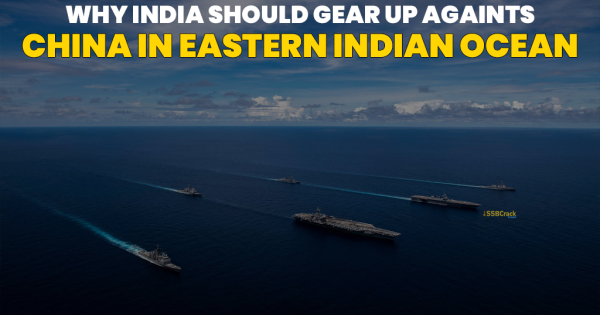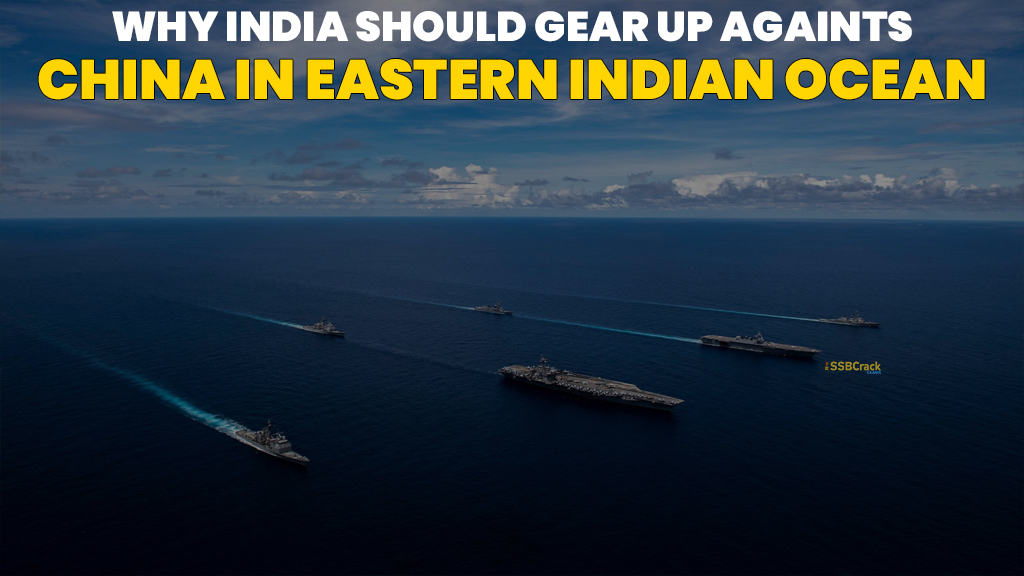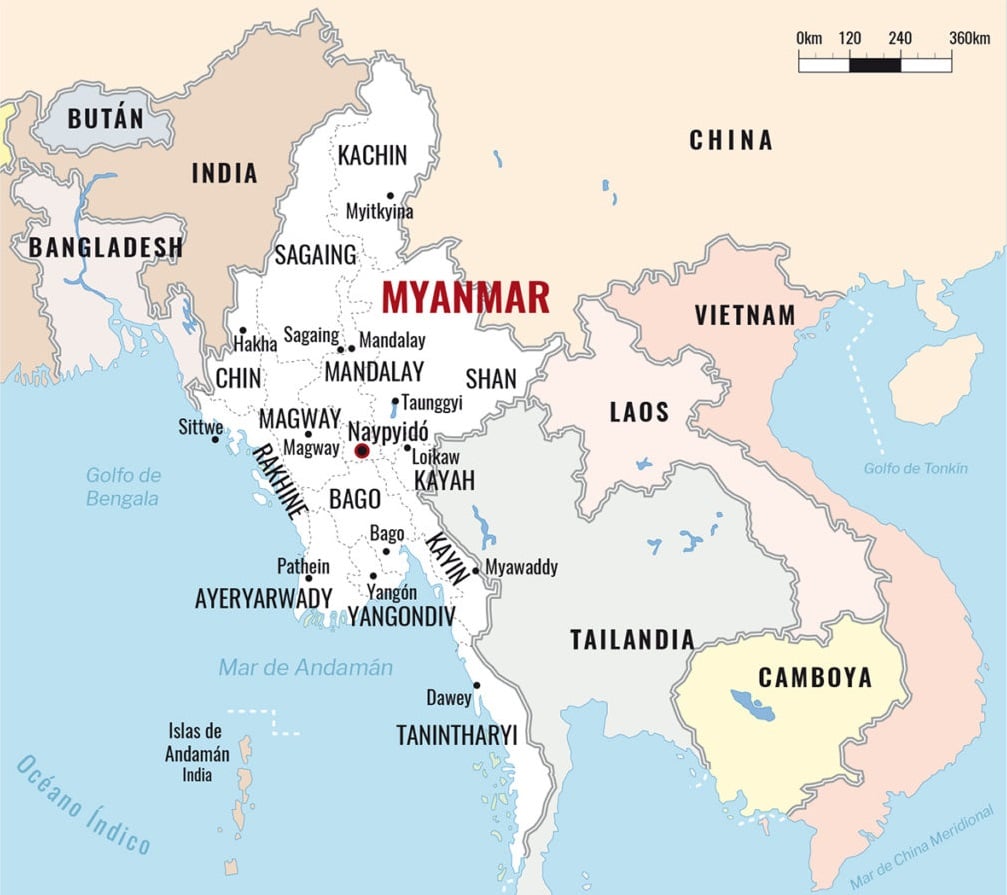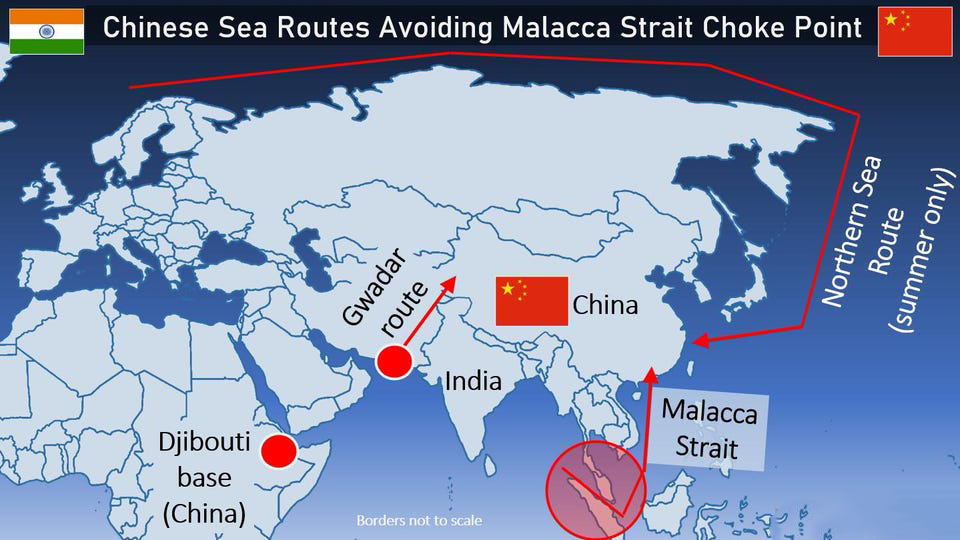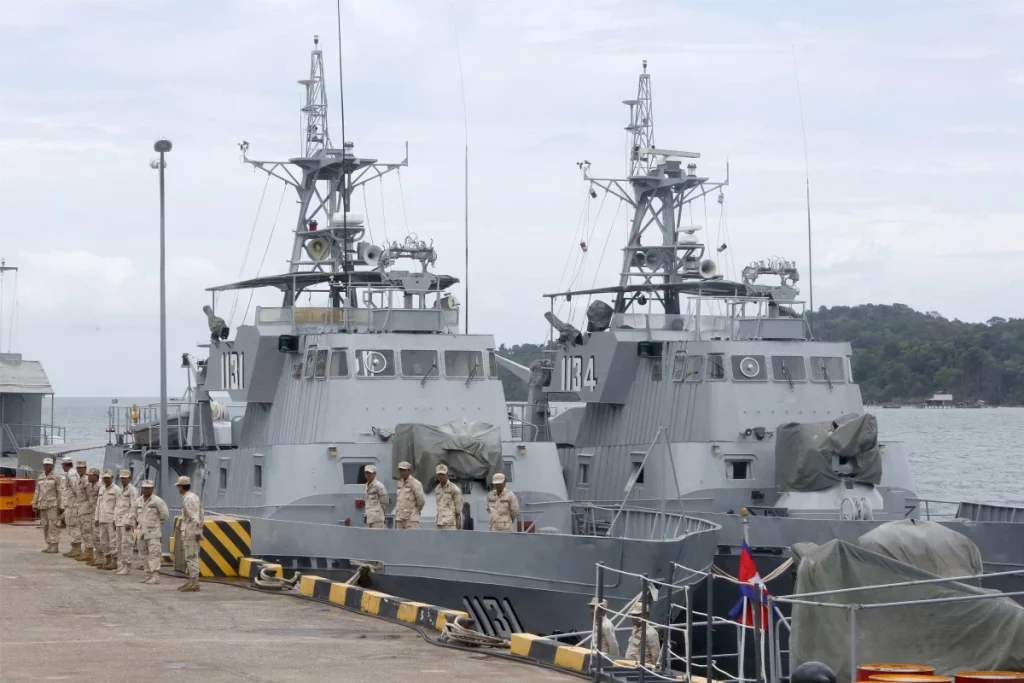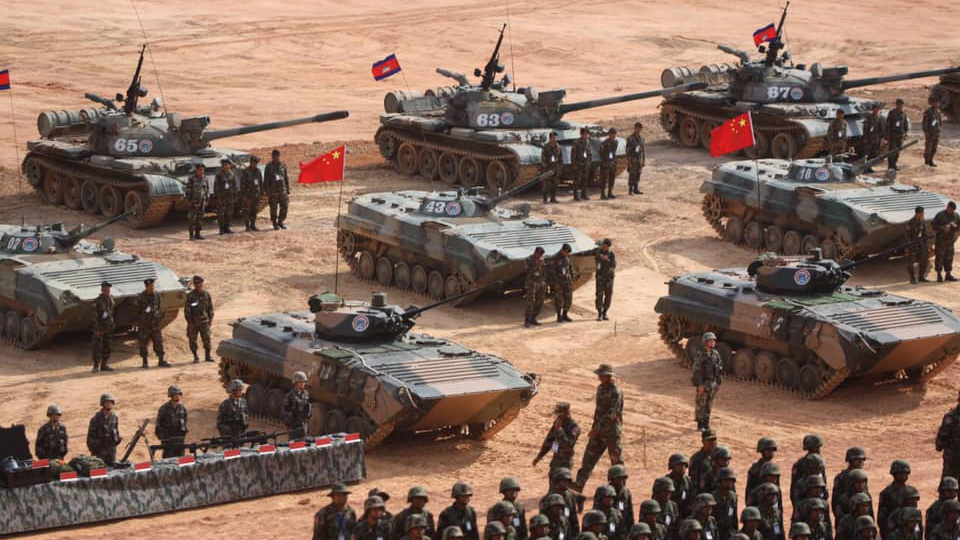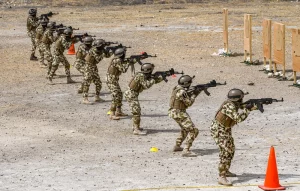Eastern Indian Ocean: China’s military presence in the Eastern Indian Ocean (EIO) is growing. In this sense, two recent occurrences are noteworthy. First, China’s People’s Liberation Army Navy (PLAN) recently conducted its first naval exercises with Cambodia. Furthermore, China is improving and modernizing the infrastructure at Cambodia’s port of Ream, which is located in the Gulf of Thailand.
According to rumours, it features a new command centre, conference and dining halls, and medical outposts. A drydock, slipway, and two new piers will be built as well. China will also conduct dredging to prepare the port for larger boats, most likely naval battleships.
China will also conduct dredging to prepare the port for larger boats, most likely naval battleships. China is heavily involved in Cambodia, especially through the Belt and Road Initiative (BRI), and the presence at Ream will strengthen Beijing’s ability to project power in Southeast Asia’s maritime region. The second significant development was the possibility of China establishing military installations on Myanmar’s Great Coco Islands. In the EIO, India’s China challenge is expected to intensify.
Why India Should Gear Up against China in Eastern Indian Ocean?
The Indo-Pacific Area
The Indo-Pacific area is centred on the EIO. It connects the Western Indian and Western Pacific Oceans. Southeast Asian and Australian countries are positioned along the EIO. The passage of sea routes across the EIO allows the commercial and naval presence of East Asian countries, especially China, in the larger Indian Ocean region. In this context, the straits of Malacca, Sunda, Makassar, and Lombok are becoming increasingly vital. Indeed, China has been concerned about the ‘Malacca Dilemma’ for the past two decades, as the majority of its energy imports flow through the strategically positioned canal.
Also read: Why Is China Strengthening Its Armed Forces?
It is concerned that unfriendly powers may shut off its access to the Malacca Strait, allowing them to exert pressure on China. As a result, Beijing has strongly opposed India’s efforts to build the port of Sabang in Indonesia. It is concerned that China’s footing at Sabang, as well as the strategic location of India’s Andaman and Nicobar Islands, where New Delhi is rapidly expanding military facilities, near the Malacca Strait, would exacerbate the issue.
Also read: Why India Should Not Rename Places In China-Occupied Aksai Chin?
As a result, China has been working feverishly to resolve the “Malacca Dilemma.” Overland energy pipelines through Central Asia and Russia are being built to address this issue. Furthermore, the China-Pakistan Economic Corridor (CPEC) and the China-Myanmar Economic Corridor (CMEC) comprise a network of energy pipelines that will assist in lessening reliance on the Malacca Strait. These pipes will deliver commodities directly to China’s mainland. CMEC is particularly important in this aspect because it connects the southern Chinese province of Yunnan to the Bay of Bengal. The issue of reliance on the Malacca Strait provides a strategic reason for China’s efforts to enhance and regularise its maritime military presence in the EIO. It is attempting to safeguard the security of its energy supply.
Strengthening of Military Ties
The strengthening of military links with Cambodia and Myanmar serves several purposes for China. For starters, regular naval exercises, military supplies, and port visits, as well as access to strategically significant places such as Great Cocos Island and the Ream naval base, will enable China to strengthen its already strong military-to-military ties with Myanmar and Cambodia. These two countries rely heavily on Chinese economic, political, and military assistance. Following the military takeover in Myanmar, the regime found itself worldwide isolated, and so, like in the 1990s, China’s influence in Myanmar is progressively expanding. Cambodia’s relations with the United States have deteriorated.
Also read: Should India Develop Tactical Nuclear Weapons To Counter China?
Second, these countries’ strategic locations will help China build a firm footing in the EIO. The presence in Cambodia and Myanmar will allow Beijing to keep a close eye on India’s strategic actions in the area. It might keep a closer eye on India’s increased naval movements in the EIO, as well as missile testing in the Bay of Bengal. In reality, there were rumours that China had installed a tracking facility in the Great Cocos Islands of Myanmar in the 1990s for precisely this purpose. The PLAN’s strategic reach and footprint will be expanded with a presence in Myanmar and Cambodia.
Third, growing ties with these two impoverished, authoritarian, and globally isolated countries aid Beijing in severing ASEAN unity and sowing conflict over the subject of maritime disputes in the South China Sea.
Conclusion: Eastern Indian Ocean
It erodes Southeast Asian countries’ resolve, and countries like Vietnam and the Philippines, which are embroiled in a South China Sea dispute with China, find it more difficult to deal with an assertive China. As a result, the Philippines is strengthening its military ties with the United States (US). The recent deal to provide the US access to four more sites in the Philippines, as well as India’s decision to purchase BrahMos cruise missiles, must be viewed in this light. Beijing’s ever-increasing strategic operations in the EIO will exacerbate India’s China issue. Andaman and Nicobar Islands’ importance in India’s Indo-Pacific strategy has never been greater than it is now.
To crack the SSB Interview and join the Indian Army as an Officer, You can join our SSB interview live classes batch and we recommend you to Enroll SSB INTERVIEW ONLINE COURSE. Trusted by thousands of defence aspirants.
Also read:
- Indian Airforce vs. Chinese Airforce [Full Comparison]
- The Indian Navy And Chinese Navy [Full Comparison]
- China Vs Taiwan Military Power Comparison 2022
- Saga Of Chinese Spy Balloon In The American Airspace
- South China Sea Dispute: SSB Interview Topic [Fully Explained]
- Significance Of New Airstrip On Lakswadeep’s Minicoy In The Face Of China
- Myanmar Constructing Secret Spy Base Near Andaman & Nicobar Islands
